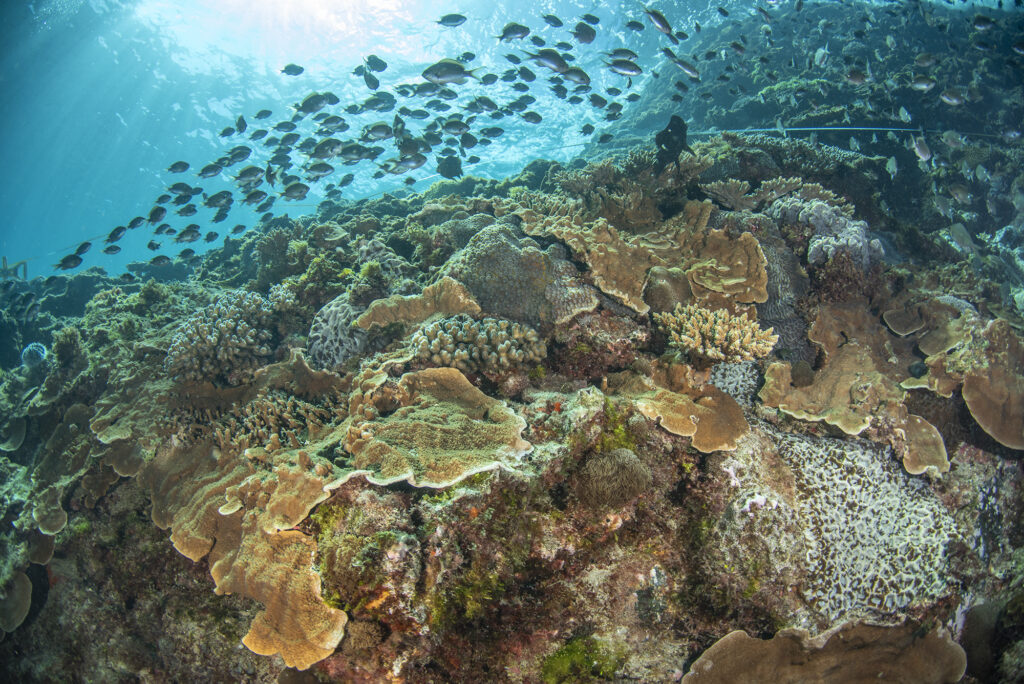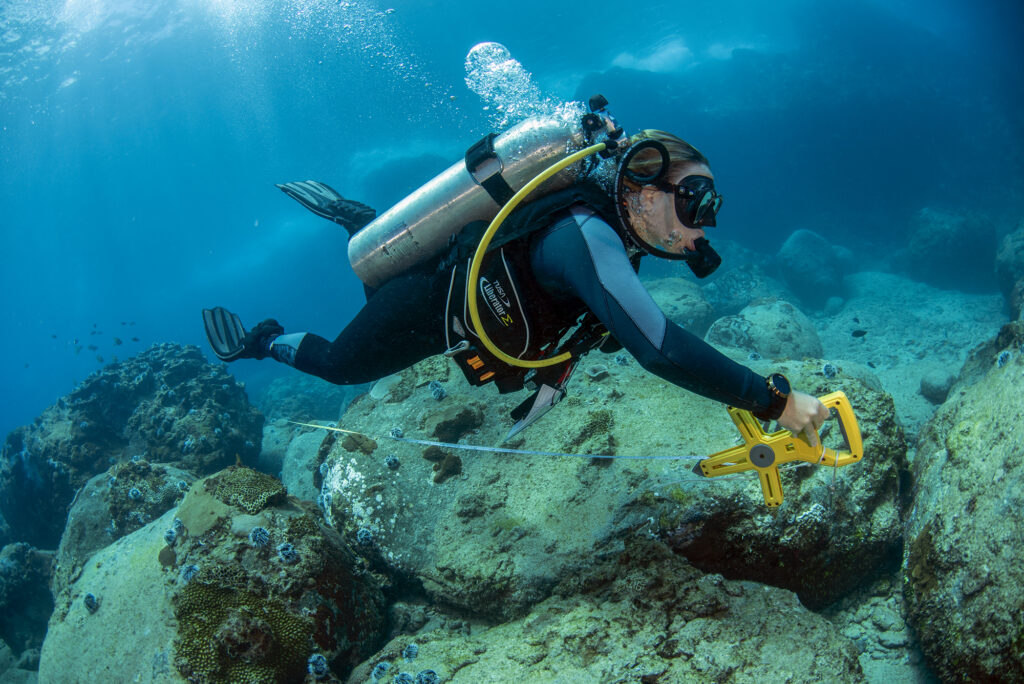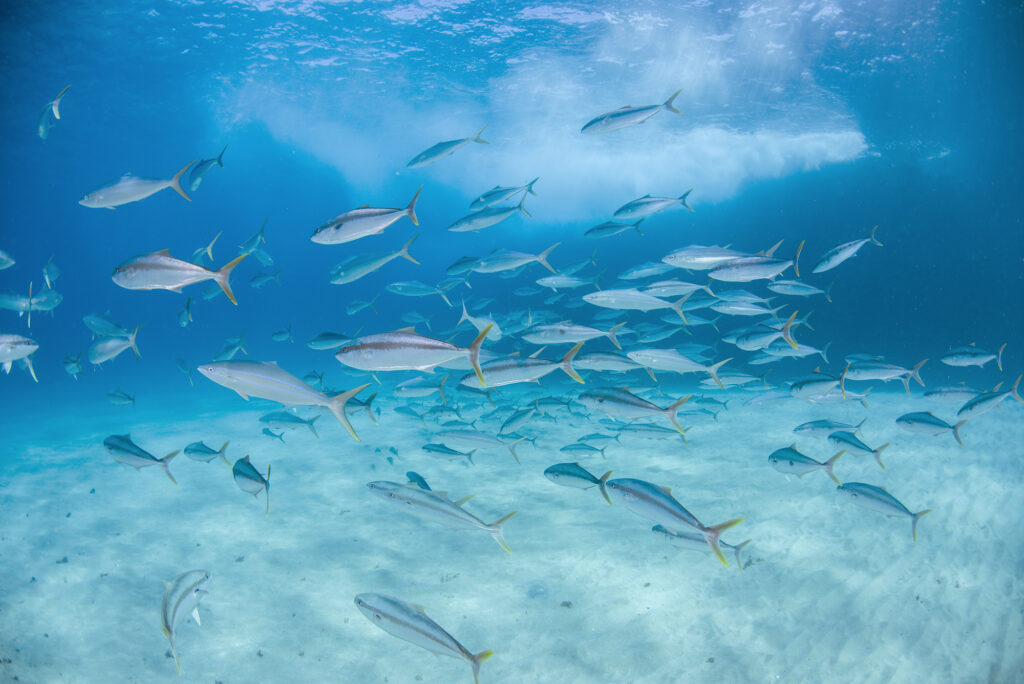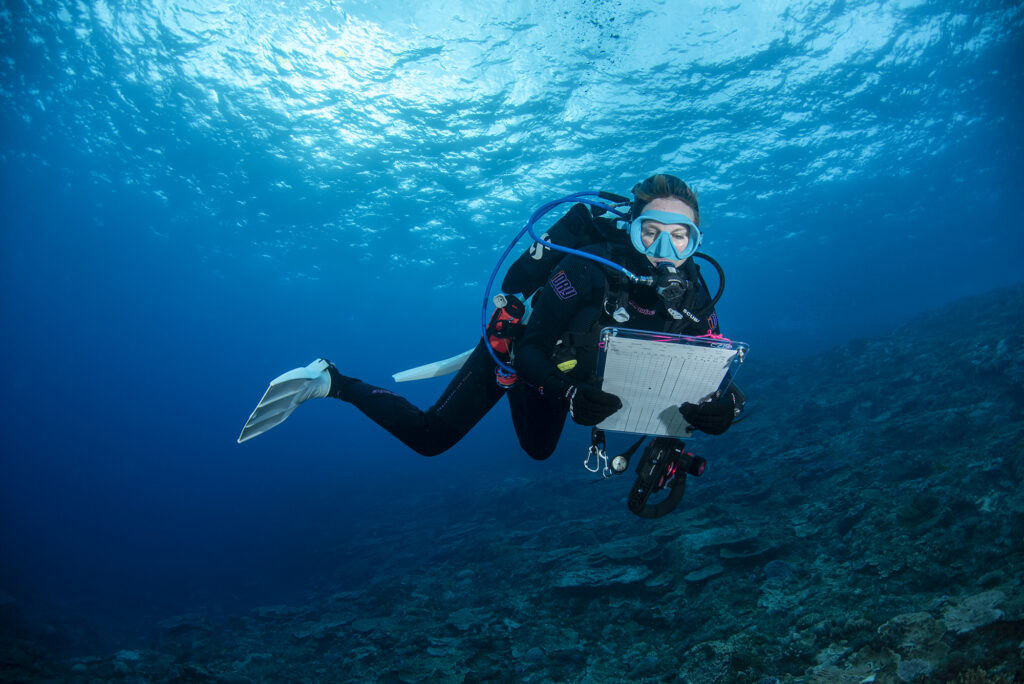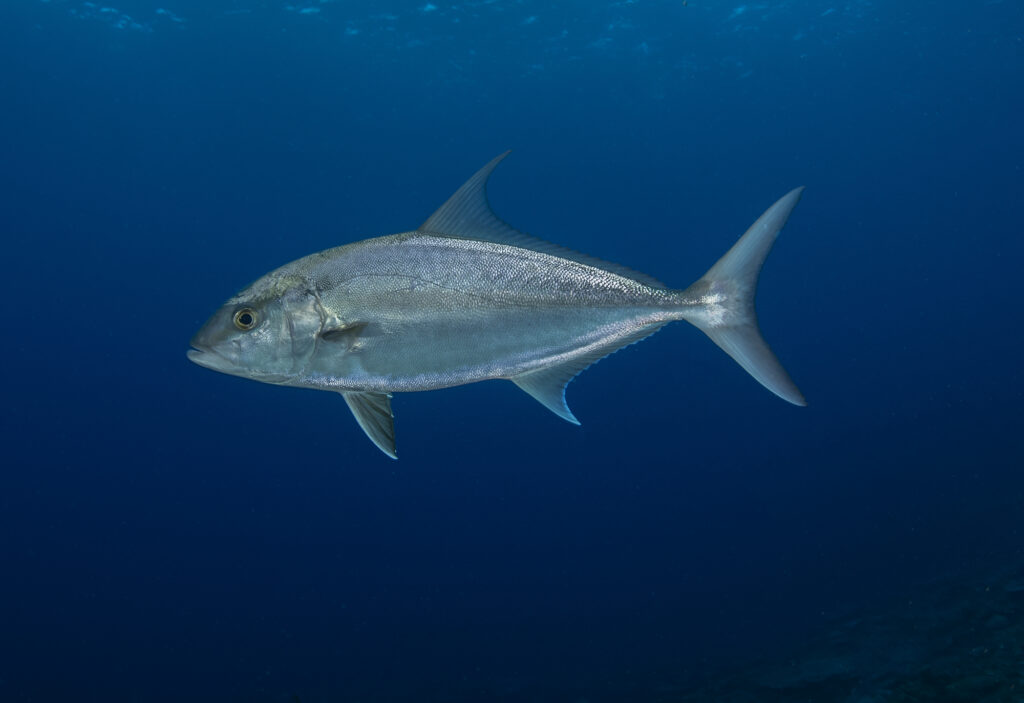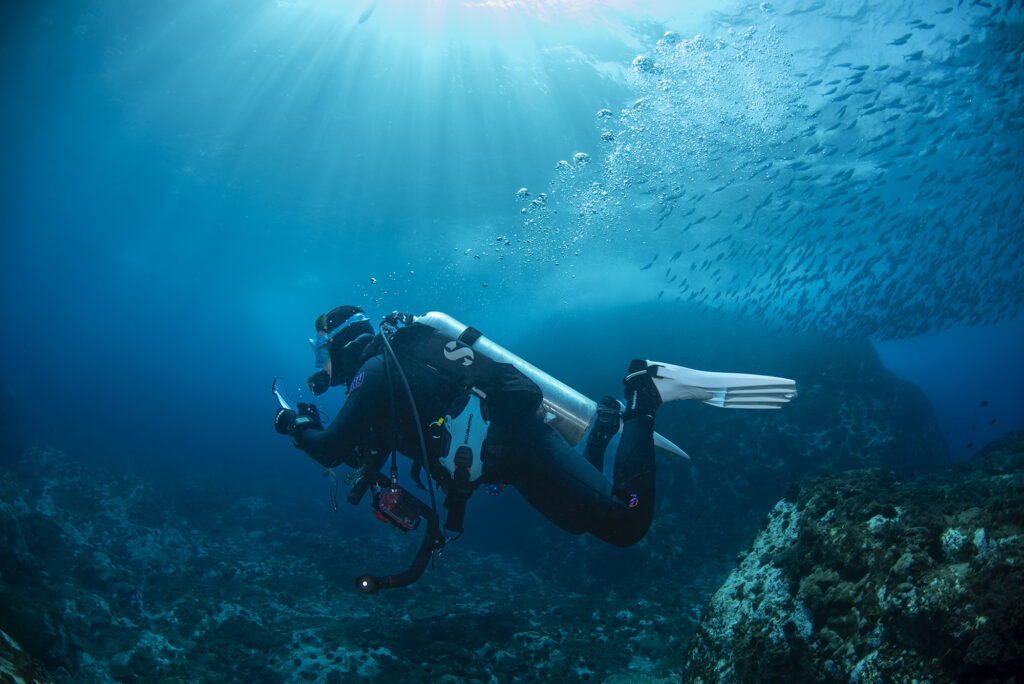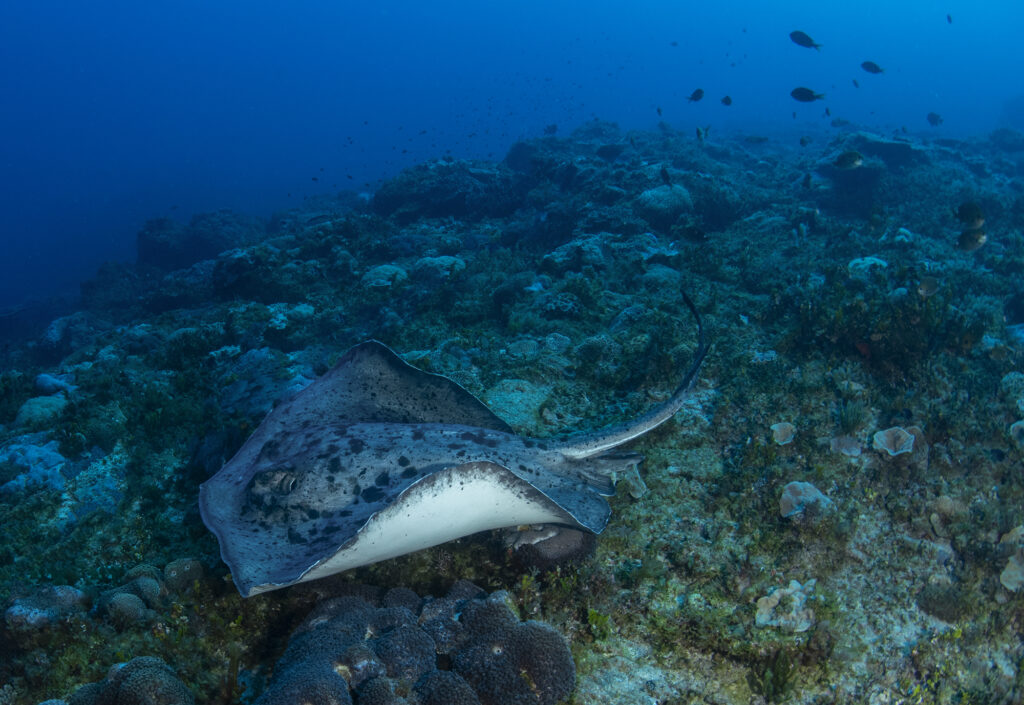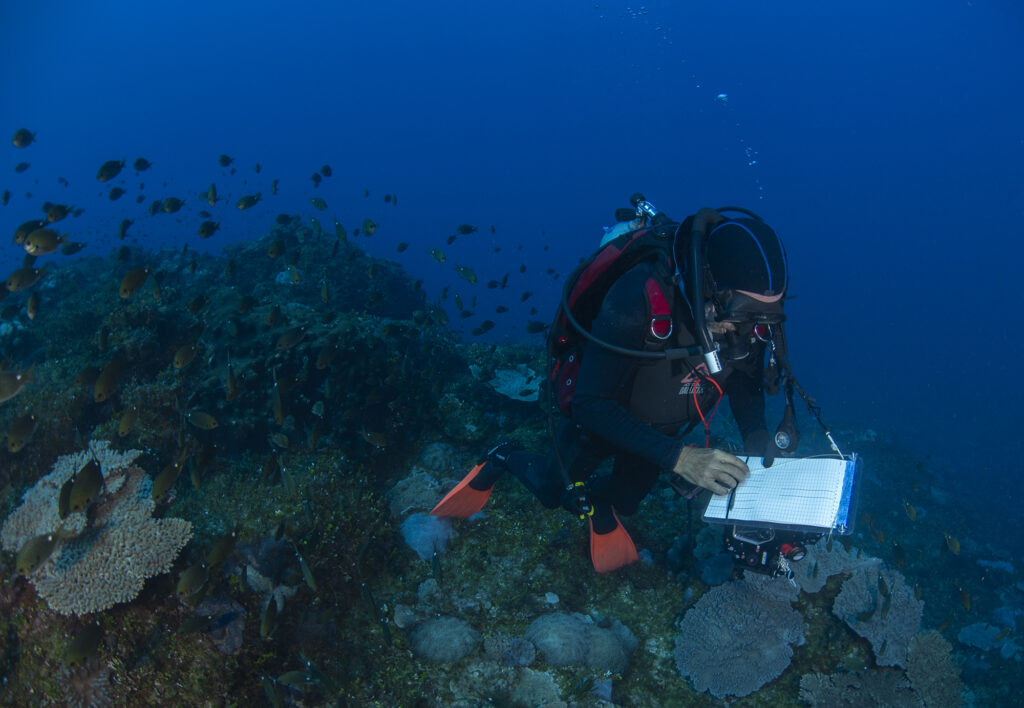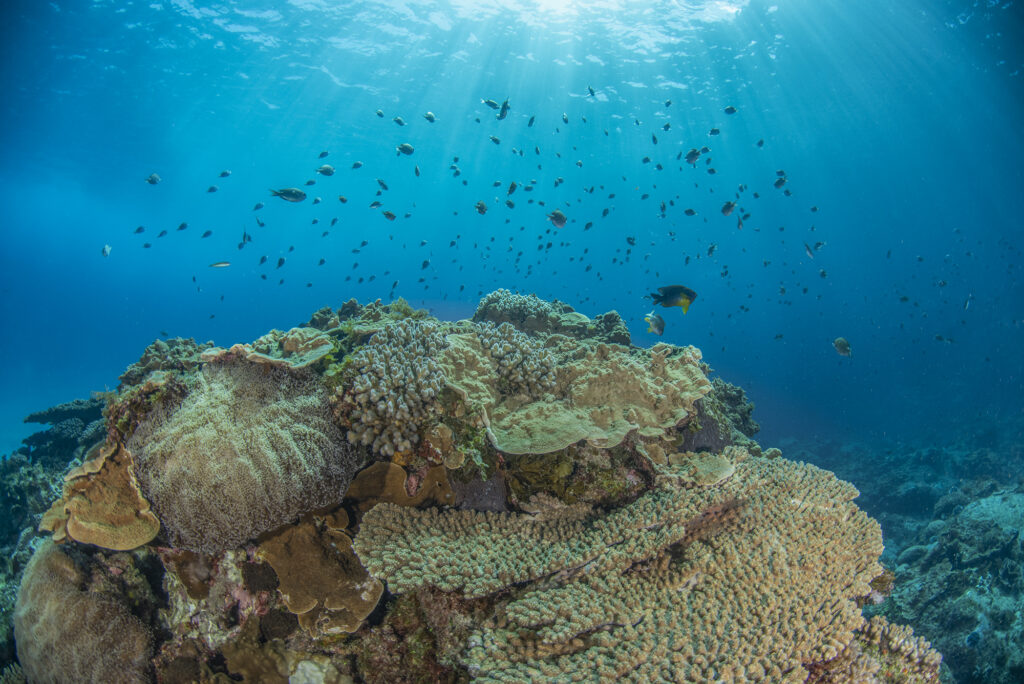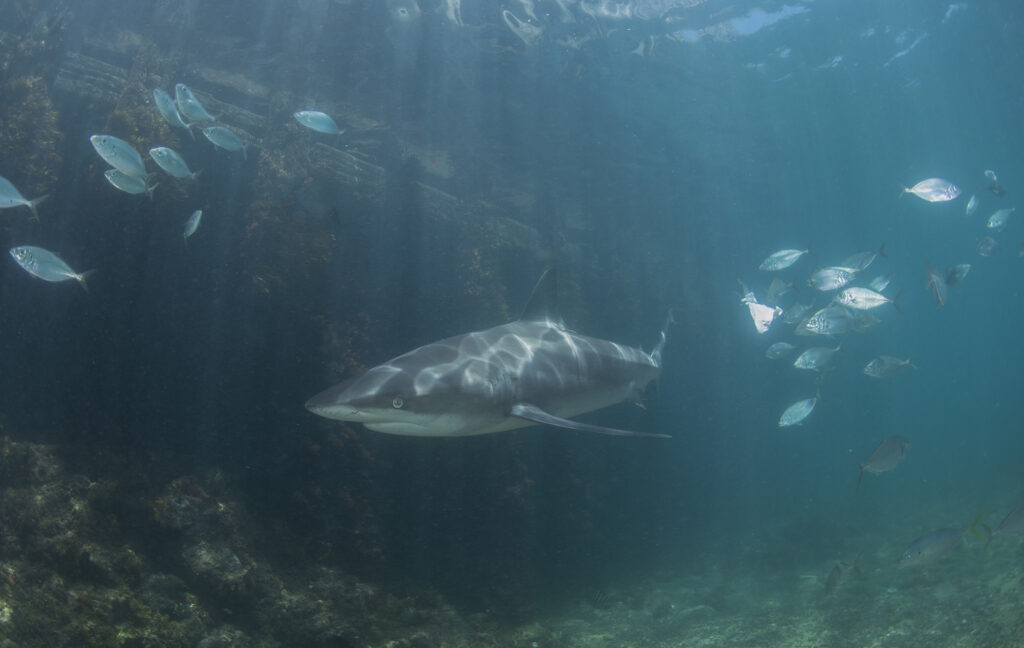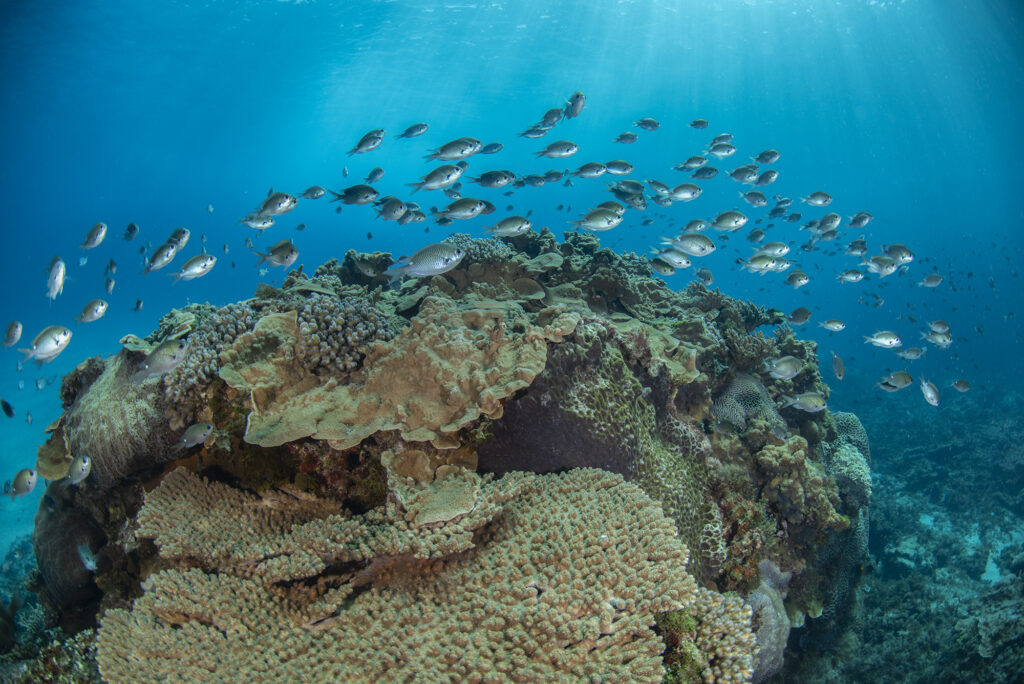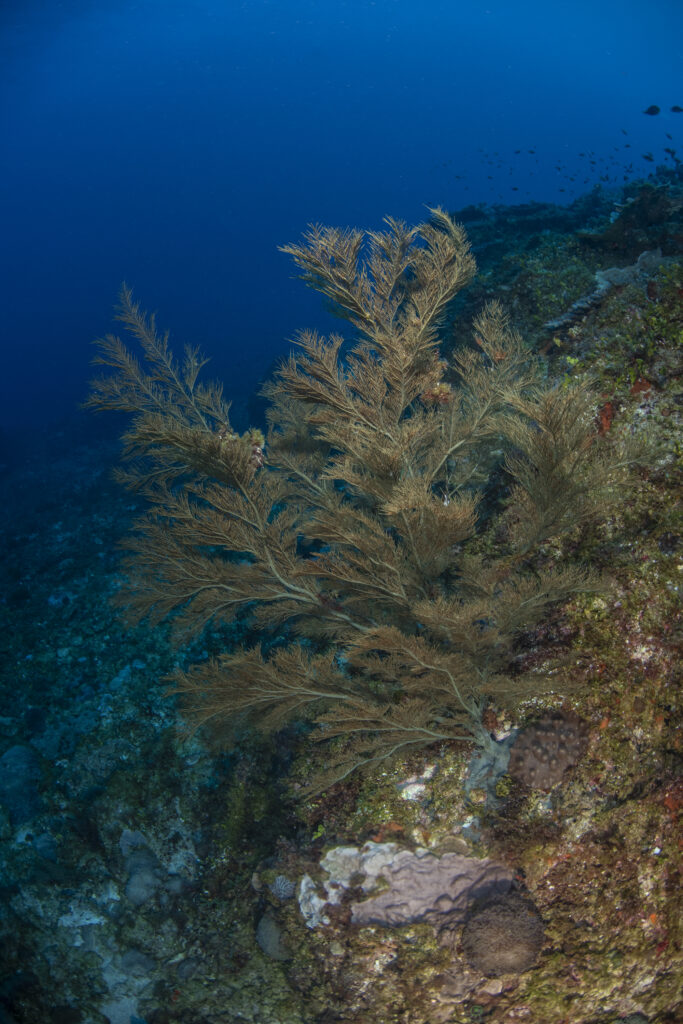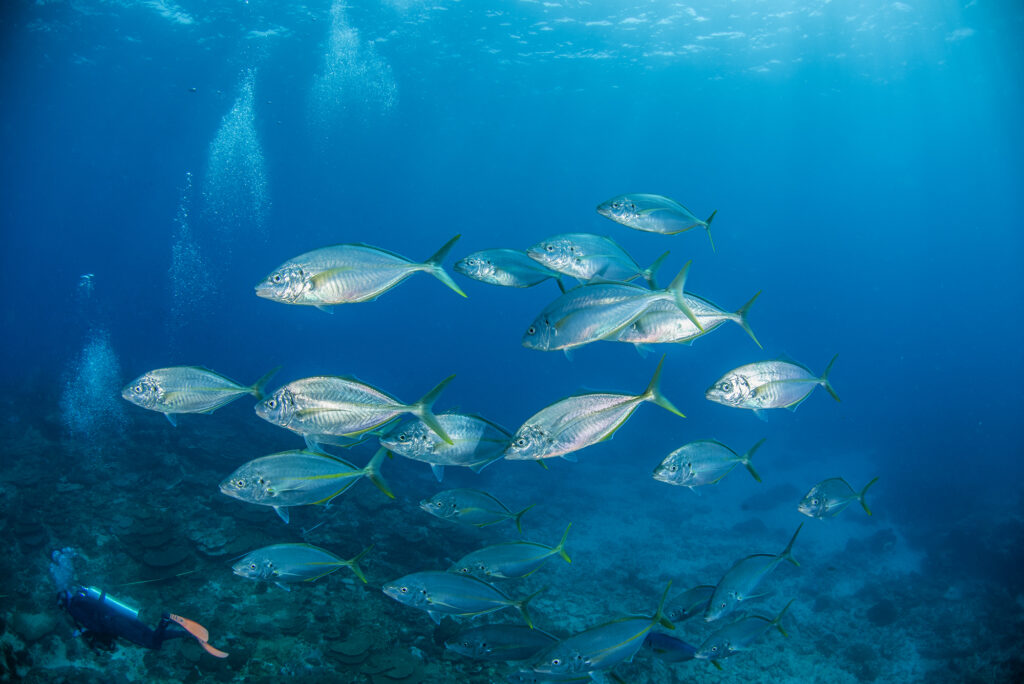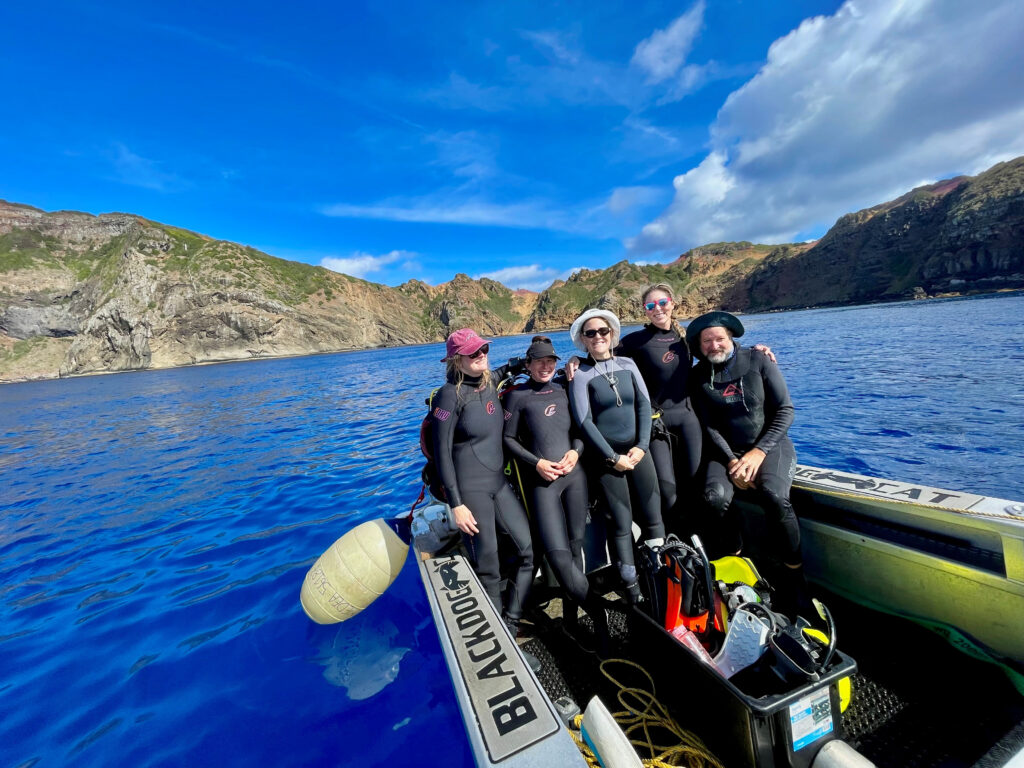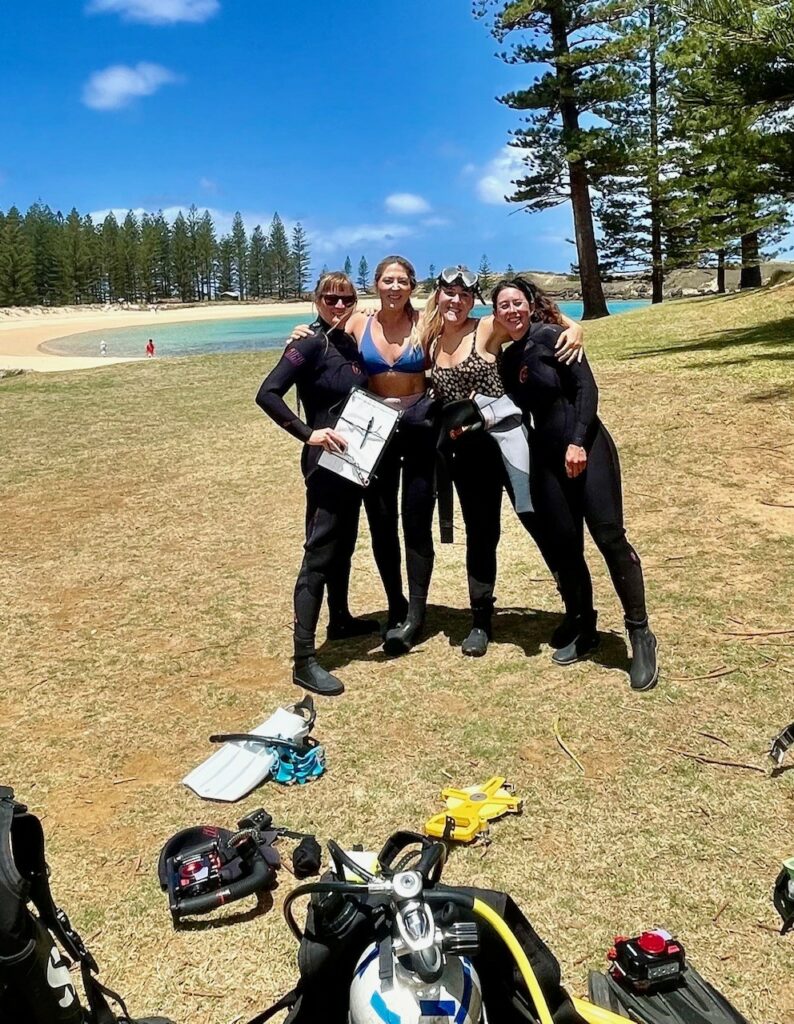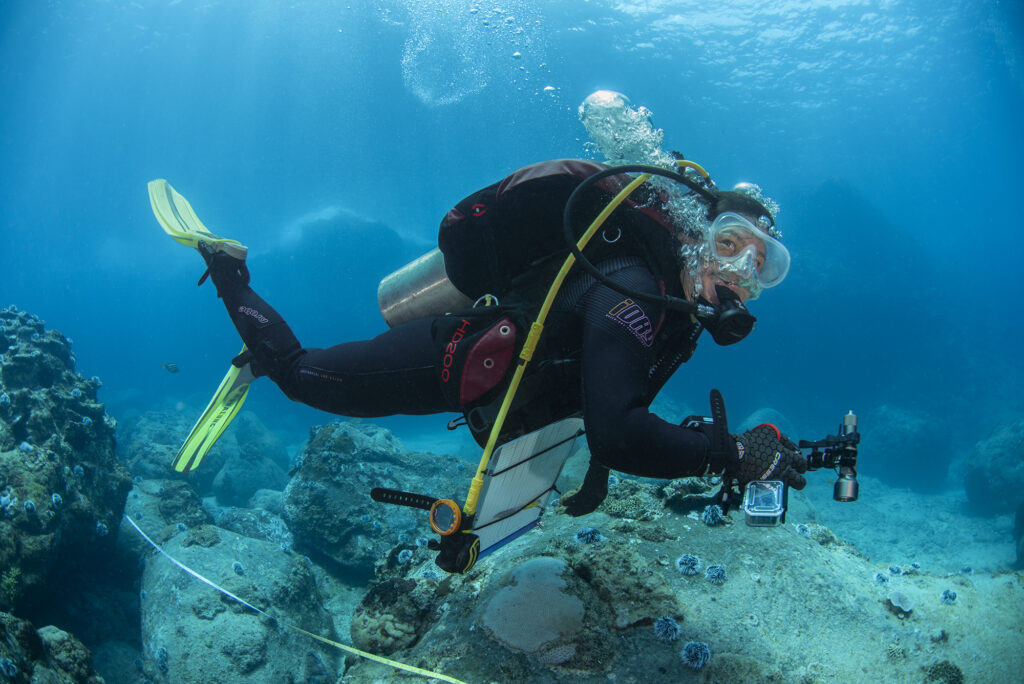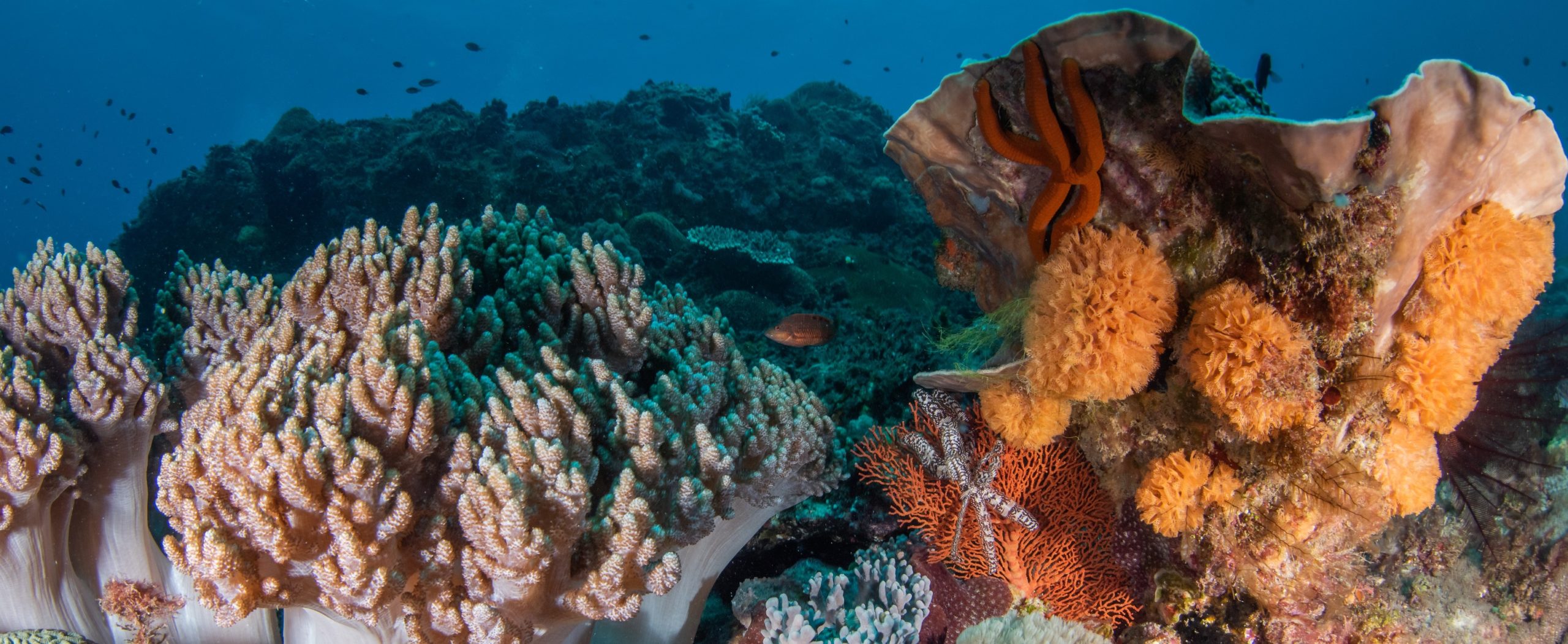There’s a reason we keep going back to Norfolk Island – and it’s not just for the food at the Bowlo! Nestled about 1500km east of Australia, roughly halfway to Aotearoa and nudging into New Caledonian waters, this rugged little speck in the South Pacific continues to deliver surprises both above and below the surface. And if you don’t know exactly where it is… well, maybe we’ll keep that secret between us.
This year, the RLS team returned to Norfolk at the end of January, and we were met with relatively kind weather. The slightly earlier dates proved to be a clever choice – conditions were calm enough to facilitate 66 surveys across 21 sites, from Norfolk itself plus the neighbouring Phillip and Nepean Islands. A solid effort given the island’s infamous swell and challenging launching logistics. Being an island surrounded by steep sea cliffs means that traditional boat rams are not possible and instead boats are craned into the water from jetties at Kingston or Cascades, an entertaining operation that is always sure to draw a crowd and is entirely unique to Norfolk Island.
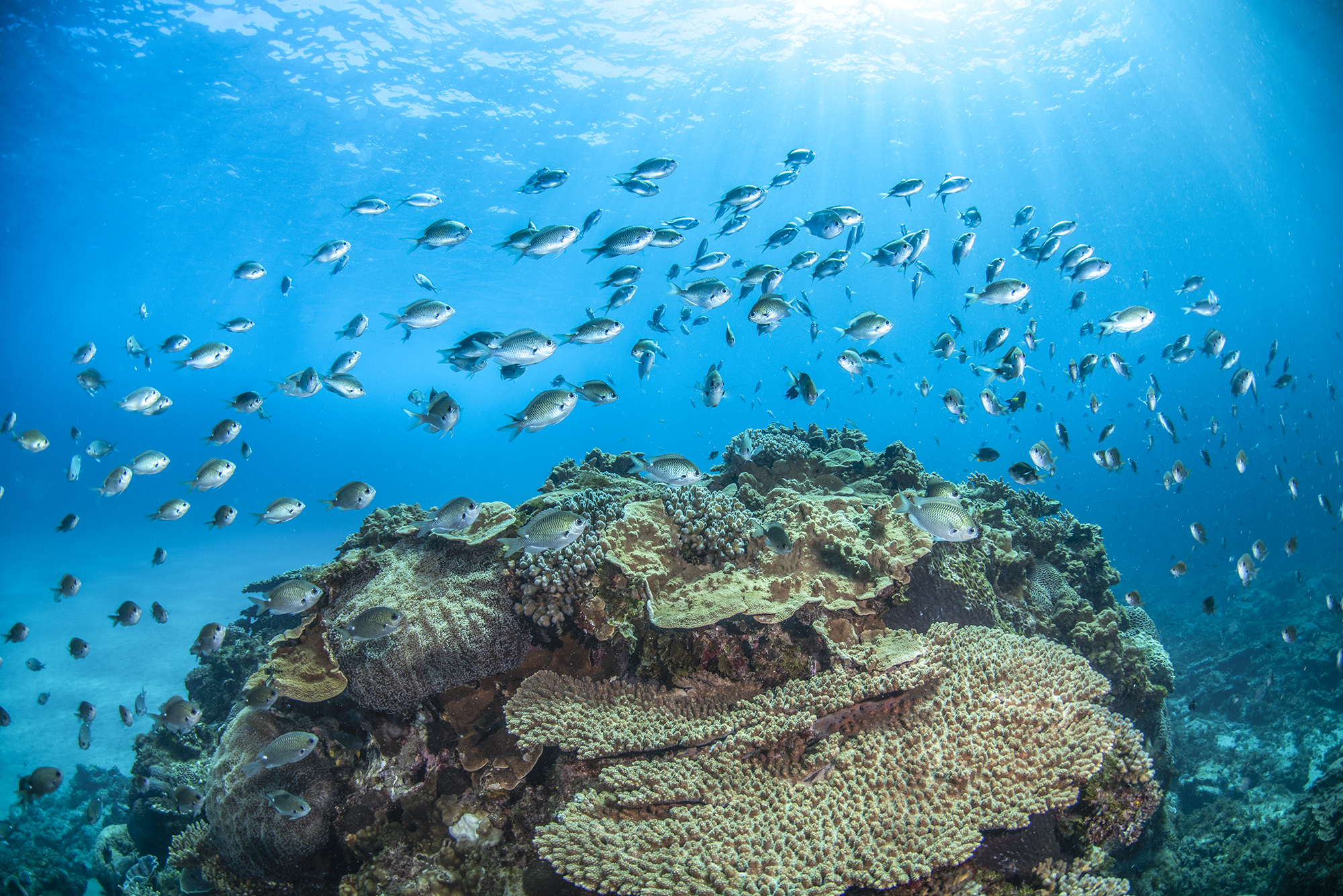
Mitch welcomed us back in true Norfolk style by dropping us in on a Phillip Island site and straight into stunning ~50 metre visibility and a wall-to-wall fish show: massive schools of fusiliers (Pterocaesio trilineata), grey knifefish (Bathystethus cultratus), kingfish (Seriola lalandii) and rainbow runners (Elagatis bipinnulata) set the tone. The team surfaced grinning and wondering if we’d peaked too early (spoiler: maybe we had). Still, even though the conditions varied over the following days, this trip gave us some of the most consistent weather windows we’ve had in years.
Norfolk is home to a unique blend of temperate and sub-tropical species from Australia, New Caledonia and New Zealand. It is surrounded by the only Australian Marine Park accessible from shore and boasts some of the most southerly coral reefs in the world. Across the trip, we recorded an average of 15 fish species per site, which is a small but noticeable increase from 13 species in previous years. All up, the team documented 183 unique fishes and invertebrates, from charismatic pelagics to cryptic reef-dwellers. The team were on fire with almost 40 new species recorded for the first time on surveys, including Pycnochromis vanderbilti and Chaetodon unimaculatus.
While much of Norfolk’s reef life remains as vibrant and unique as ever, we did notice some subtle shifts that caught our eyes. Fluorescing corals were seen outside the lagoon – often a sign of stress and potentially linked to recent heatwaves sweeping across the broader region. And a notable number of Lamington urchins (Tripneustes australiae) were observed outside the lagoon as well. These spiky grazers are a classic boom-and-bust species, and have recently made a stir for population explosions around Lord Howe Island and parts of the NSW coast. It wasn’t a huge surprise to see them here as well, but timely for the team to be able to document some of these numbers.
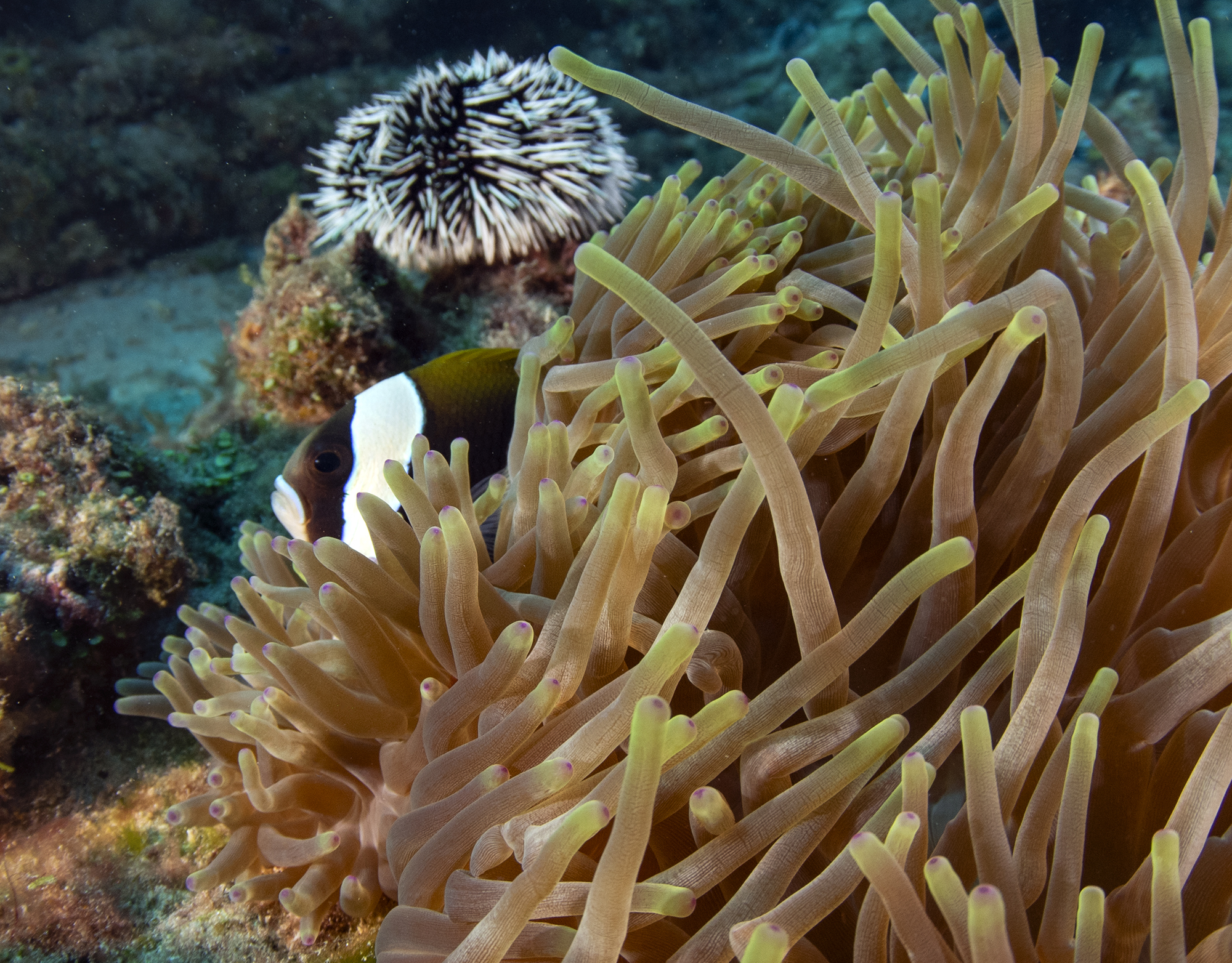
Beyond the surveys, the trip was a chance to engage with the Norfolk Island community. RLS co-founder, Graham Edgar delivered a well-attended and engaging public talk, highlighting both the beauty and ecological importance of Norfolk Island’s reefs, how they tie into the reefs in Australia and New Zealand, and the value of long-term data in understanding and protecting them.
A huge thank you to the incredible RLS dive team: Maddie, Toni, Lizzi, Nat, and of course Graham. We were once again lucky to have the support of Mitch and Grant, whose local knowledge and boat handling skills ensured our dives were both safe and productive. Thanks also to Sara and the National Parks crew for the warm welcome and support throughout the trip, and of course to the wonderful Norfolk island community for hosting us, Thaenk yuu!
We left Norfolk again filled with admiration for its rugged beauty, unique wildlife, and tight-knit community. The island continues to highlight the value of these long-term surveys for detecting ecological changes and ensuring the knowledge is passed onto the people passionate about preserving its marine life.
